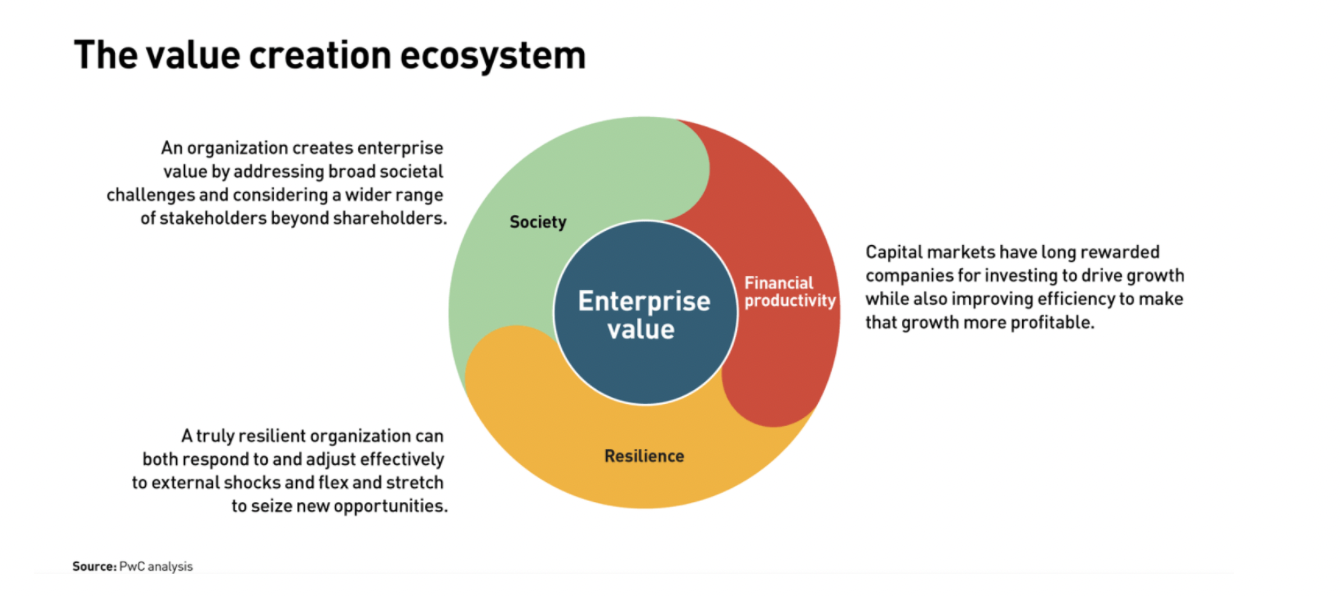Strategy+Business recently published “A CEO Guide to Today’s Value Creation Ecosystem.”
Despite the wonky title, a colorful image always captures my eye. Thankfully. Because said “value creation ecosystem” is proving a valuable tool for me in shaping conversations with leaders pondering the Future of Work (FOW).
The challenge at the heart of FOW is that - by definition - it’s unknowable.
It’s easy to get lost in the spin of all we can’t predict; the totality of questions we can’t answer.
But what if we focused instead on a single question we can answer?
How will we create value as we head into the FOW?
Enter the Value Creation Ecosystem, in all its technicolor glory:

The enterprise value framework is designed to help CEOs define how their organizations will create value. It’s comprised of 3 components:
1. Financial productivity: how financial investments are allocated
2. Resilience: how we respond to shifts and surprises
3. Society: how our decisions impact citizens and stakeholders around us
As I read the article though, my mind kept asking “why can’t any leader at any altitude use this framework to define the value their team will deliver?”
So I boiled each pillar down to its essence, and granted myself the poetic license to reframe the ecosystem this way:
1. Financial productivity: Priorities. Where we invest our time, focus, and energy.
2. Resilience: Agility. How we monitor and respond to the unexpected
3. Society: Impact. How our choices affect our teams and internal clients
I’m starting to use this framework with various leaders to focus their FOW-related thinking - regardless of how high up on the org chart they sit.
“We don’t have to figure it all out today,” I tell them. “But let’s focus on answering some targeted questions to help guide us.”
- 1. Priorities: What projects or opportunities should command our time and attention?
- Who must we collaborate with in order to deliver?
- Where are the efficiencies in achieving these priorities?
- What conditions will enable us to maximize the quality of our outputs?
2. Agility:
- How can we assess regularly how our projects are going?
- How can we quickly identify the best solution to a challenge as it arises?
- How can we experiment as we go to find new ways of delivering?
3. Impact:
- What strategies – formal and informal – can we tap to see how our work is being experienced by each other and our internal partners?
- What key performance indicators should we watch for?
- How can we maintain an open and ongoing dialog with our stakeholders so feedback is always inbound?
- How can we honor our commitment to reflect on and respond to feedback we receive?
This is where we are beginning our FOW conversations. And just giving leaders a sense of scope and direction – pulling them out of the spin – is enhancing the quality of their outputs.
So, wherever you sit in your organization – how might you leverage this framework in defining with your team how you’ll create value moving forward?

